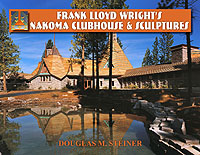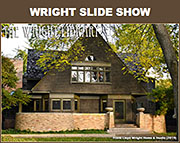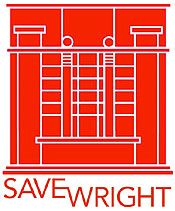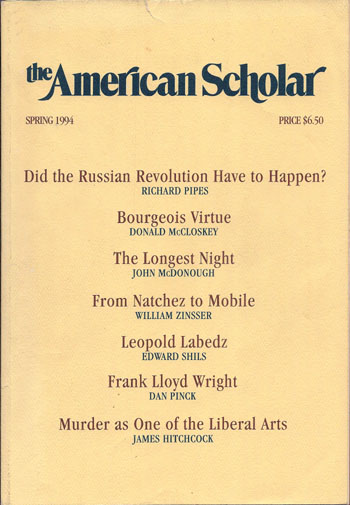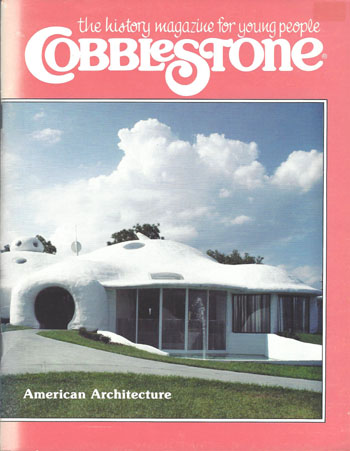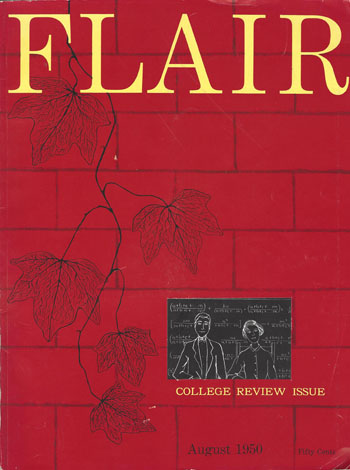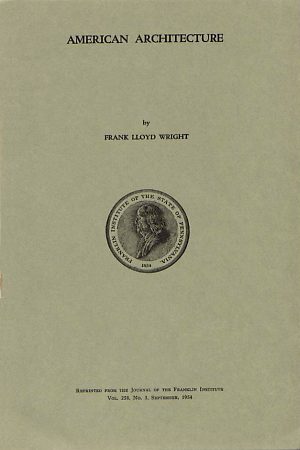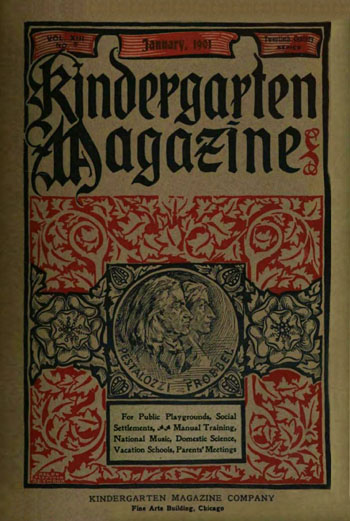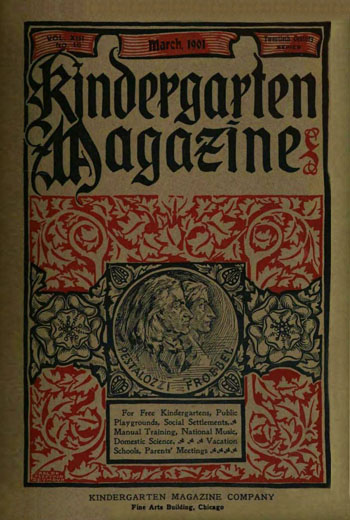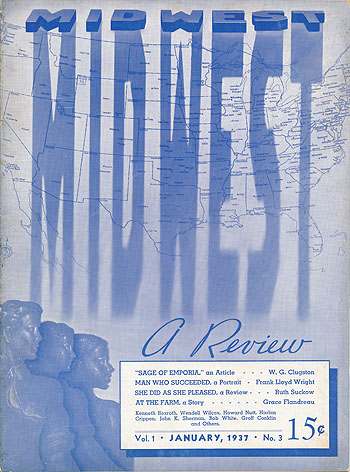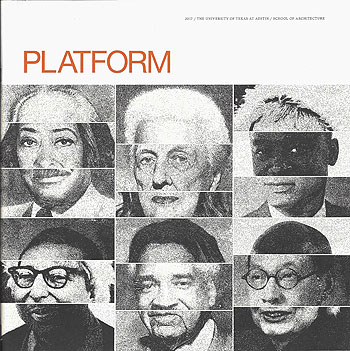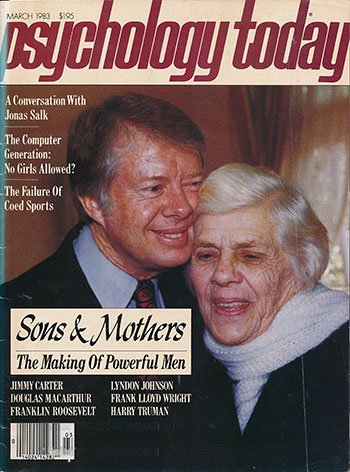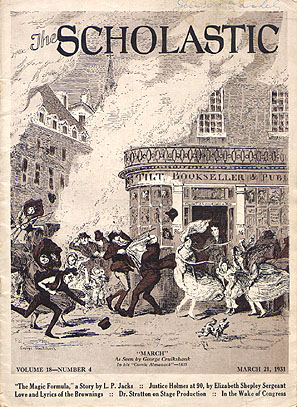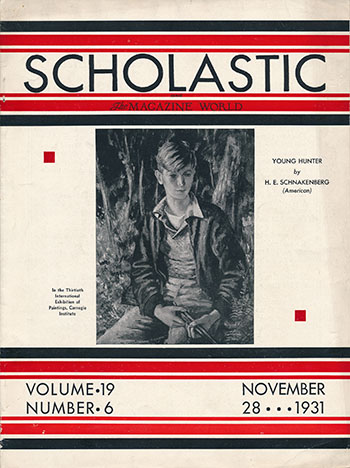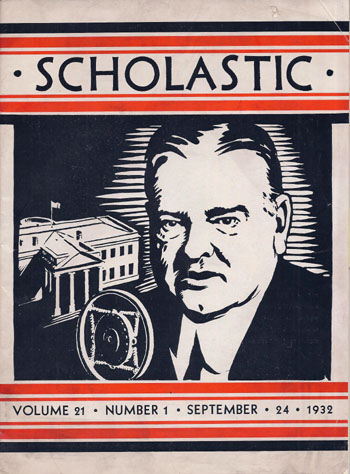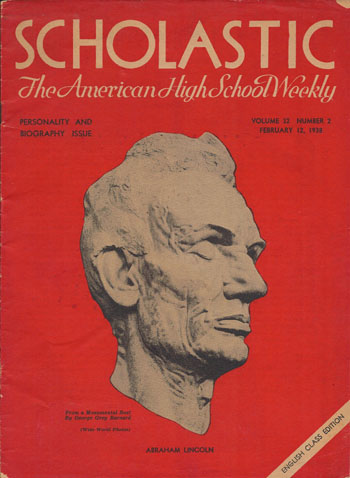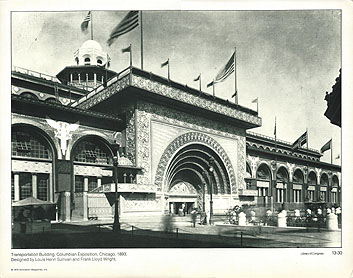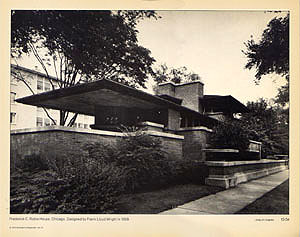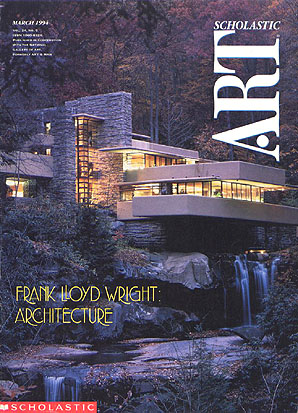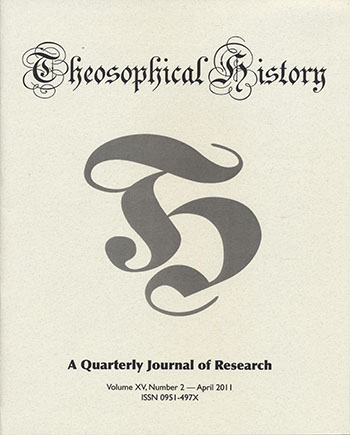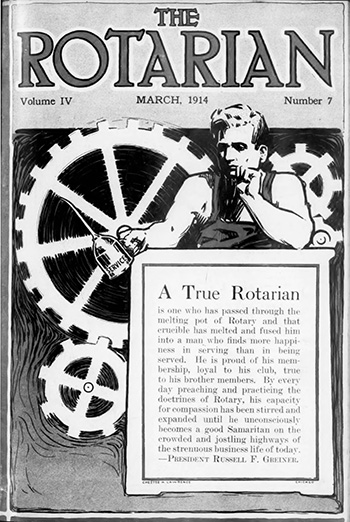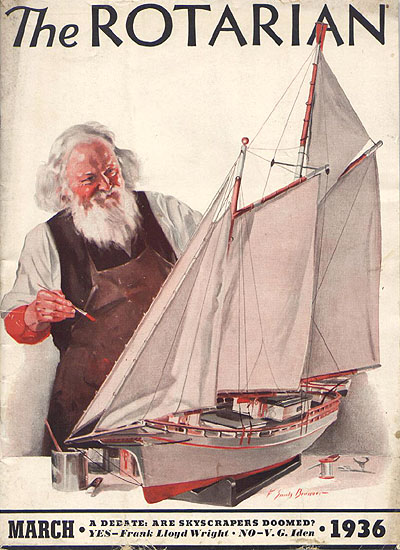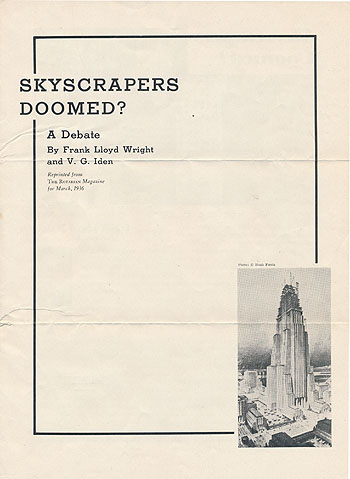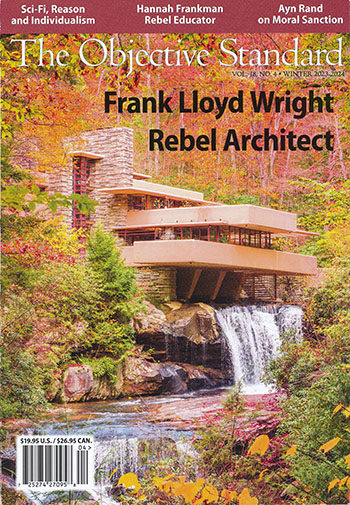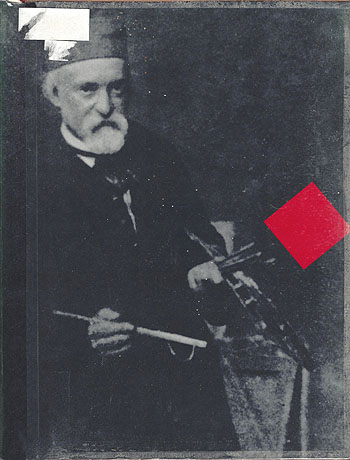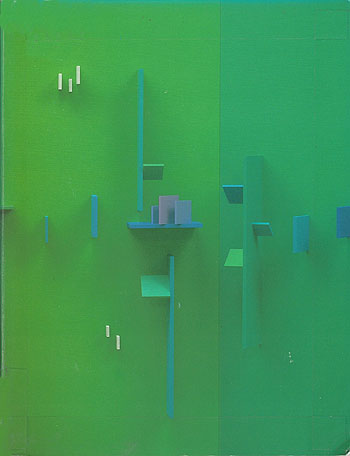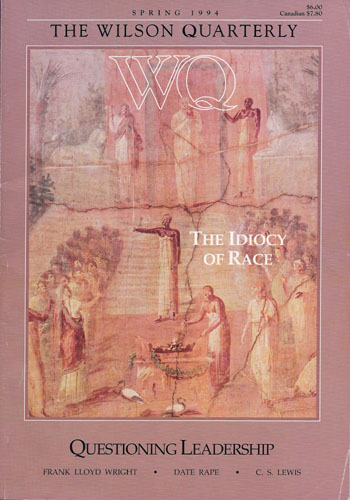
SUPPORT THE
WRIGHT LIBRARY
PROCEEDS FROM EVERY SALE GOES TO SUPPORT THE WRIGHT LIBRARY.
CLICK TO ORDER.
WE PROUDLY SUPPORT THE FRANK LLOYD WRIGHT FOUNDATION
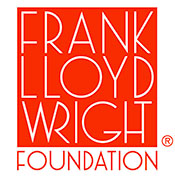
WE PROUDLY SUPPORT THE FRANK LLOYD WRIGHT BUILDING CONSERVANCY
WE PROUDLY SUPPORT FALLINGWATER
AND THE WESTERN PENNSYLVANIA CONSERVANCY
AMERICAN SCHOLAR COBBLESTONE COLUMBIA MAGAZINE FLAIR FRANKLIN INSTITUTE KINDERGARDEN MIDWEST
PLATFORM PSYCHOLOGY TODAY SCHOLASTIC SCHOLASTIC ART THEOLOGICAL HISTORY THE ROTARIAN
THE OBJECTIVE STANDARD THE STRUCTURIST WILSON QUARTERLYAMERICAN SCHOLAR Date: 1994 Title: American Scholar - Spring 1994 (Published quarterly by the Phi Beta Kappa Society, Washington D.C.)
Author: Pinck, Dan
Description: "Frank Lloyd Wright, The Many Lives Of. ...What do we know about Frank Lloyd Wright? We know that he is the last architect to bat over .400; that he is copied but rarely emulated; that he was a difficult person; that he had three wives and one emasculating mother; that he is still the most honored architect in the United States, with at least twenty of his houses and buildings open for public tours; that he designed houses and buildings in thirty-six states and overseas, most notably the Imperial Hotel in Tokyo, that books about him and his work are a cottage industry; that he had students and disciples at Taliesin in Spring Green..." Original cover price $6.50.
Size: 7 x 10
Pages: Pp 267-276
ST#: 1994.081.0414
COBBLESTONE Date: 1988 Title: Cobblestone: The History Magazine for young people - August 1988 (Published monthly by Cobblestone Publications, Inc., Peterborough, NH)
Author: Blohm, Graig E.
Description: "An American Architectural Genius. ...Frank Lloyd Wright remained active until his death in 1959 at the age ninety-one. While most people retire, Wright worked on, creating in his later years buildings such as the Martin County (California) Civic Center and the famous Guggenheim Museum in New York. Today, some of his buildings have been demolished (the Imperial Hotel, for example, is gone), and many others, such as his proposed mile-high office building for Chicago, remain only on paper. But hundreds of his buildings still stand, elegant monuments to an American architectural genius." Includes four photographs. Original cover price $2.25.
Size: 7 x 9
Pages: Pp 18-21
ST#: 1988.86.0815
COLUMBIA MAGAZINE Date: 2012
Title: Columbia Magazine - Fall 2012 (Published for Alumni and friends of Columbia University, New York)
Author: Anonymous
Description: Frank Lloyd Wright Papers Coming to Avery. Twenty-three thousand architectural drawings. Forty-four thousand photographs. Six hundred manuscripts. Three hundred thousand letters. "It's a magnitude beyond what anybody can imagine," says Carole Ann Fabian, director of Columbia's Avery Architectural and Fine Arts Library. Anonymous
On September 4, the University announced that Avery, in a joint acquisition with the Museum of Modern Art, will receive from the Frank Lloyd Wright Foundation the entire paper-based archive of America's essential architect.
Frank Lloyd Wright? At Columbia? Nature- besotted Emersonian, rural Wisconsinite married to the Midwest and the Southwest rather than the Upper West, schemer of horizontal Prairie houses rather than skyscrapers, a radical who declared that cities, one-time agents of culture, now stood in the way of culture...
Includes one illustration of Wright’s Arizona State Capitol.
Size: 8.25 x 10.5
Pages: Pp 44-45
ST#: 2012.42.1124FLAIR Date: 1950
Title: Flair - August 1950 (Published monthly by Cowles Magazines, Inc., New York)
Author: Anonymous
Description: "Return to Tradition. College Architecture Regains Its Early Freedom..." Includes two photographs of the Annie Pfeiffer Chapel by Pedro Guerrero. Exterior caption: "Frank Lloyd Wright’s chapel for Southern Florida interprets its function, its day, its climate." Interior color photograph caption: "Cool and luminous, Frank Lloyd Wright’s Chapel for Florida Southern uses baffles and skylights to modulate the blazing Florida sun. Pinpoint outer windows are set with cut-glass jewels." Original cover price 50c.
Size: 9.75 x 13
Pages: Pp 60-63
S#: 0831.62.0617JOURNAL OF THE FRANKLIN INSTITUTE Date: 1954
Title: Journal of The Franklin Institute - September 1954 (Reprint) (Published by The Journal of The Franklin Institute. Reprinted from The Journal of The Franklin Institute, Vol. 258, No. 3, September 1954.)
Author: Wright, Frank Lloyd
Description: Presentation of the Frank P. Brown metal. Proceedings of the presentation of the frank P. Brown metal, deferred from the 1953 metal day ceremonies, and presented June 4, 1954, in the lecture hall of The Franklin Institute.
1) "Mr. Sellers: Mr. President., I present Frank Lloyd Wright for an award. Our candidate is without question the dean of American Architecture. His influence on the architectural thought of our times has been great and far reaching, both in this country and abroad. His career is unmatched, extending over a period of sixty years and still going on. Mr. Wright has always insisted on a return to true basic architectural principles..."
Acceptance speech delivered by Mr. Wright, on the location of the award of the Frank P. Brown metal to him, June 4, 1954, in the lecture hall of the Franklin Institute.
2) American Architecture. Ladies and gentlemen: this is a serious occasion. I was blamed for recently excepting, with lightness, and, I thought, some Grace -- a similar honor from the American Institute of Art and Letters. The comment upon the reception of the metal at that time was that mine was a cranky and cocky acceptance. I am not cranking now and I am not cocky. I am seriously gratified to have Science thus recognize one in the field of art, which is, after all, rather low down at this time in the history of our world..." Two copies. (Sweeney 1037)
Size: 6.5 x 9.5
Pages: Pp 217-224
S#: 1037.00.1099, 1037.00.0618
KINDERGARTEN MAGAZINE Date: 1901 Title: Kindergarten Magazine - January 1901 (Published by the Kindergarten Magazine Company, Fine Arts Building, Chicago)
Author: Seymour, Ralph Fletcher
Description: Starting with the January, 1901, Volume XIII, No. 5, the cover was designed by Ralph Fletcher Seymour. Designed to imitate old wood block prints. Page one was also two color, with a decorative initial cap matching the cover and was hand-lettered. April issue, page 474: "An unusual method in book making is being developed by Ralph Fletcher Seymour, whose office is in the Fine Arts Building. With the purpose of securing more perfect unity between the format of a book and its contents he undertakes the design and lettering by hand of entire book and its contents after the manner of the old manuscript books, and to further elaborate them with decorations and Illustrations. This interesting work produces beautiful as well as unique results..." (Digital and printed copy)
Size: 6 x 9.5
Pages: Cover
S#: 0049.12.0116
Date: 1901 Title: Kindergarten Magazine - March 1901 (Published by the Kindergarten Magazine Company, Fine Arts Building, Chicago)
Author: Anonymous
Description: "The Fine Arts Building, Chicago... This impressive building marks a unique step in business enterprise. As its name indicates, it is devoted to the exclusive use of the artist world. The idea of such an office building matured slowly in the mind of its present manager, Mr. C. C. Curtis, for fifteen years... Among the prominent social organizations that center here is the Chicago Women’s Club... Other literary and social clubs that find a home here are the Caxton, the Fortnightly, the Young Fortnightly, the Daughters of the American Revolution, and the Chicago Glee Club. Many artists whose names are familiar... Lorado Taft, Charles Francis Brown, Mari R. Hofer, Ralph Seymour... Among the literary and educational publishers are the following: Prang Educational Company... D. Appleton & Co., The Dial, Saturday Evening Post, Child Study Monthly..." Includes five photographs. (Digital and printed copy)
Size: 6 x 9.5
Pages: Pp 418-422
S#: 0049.13.0116
MIDWEST: A REVIEW Date: 1937
Title: Midwest: A Review - January 1937 (Published monthly by The Midwest Federation of Arts and Professions. Minneapolis, Minnesota)
Author: Wright, Frank Lloyd
Description: "The Man Who Succeeded." According to Bruce Brooks Pfeiffer, "Frank Lloyd Wright wrote a series of 12 short stories, beginning in 1931 with the title "The Man Who..." These quizzical and whimsical writings are unexpected of Wright. Along with their irony and sometimes strangely twisted humor, however, they each carrier a characteristic message. The importance or pertinence of the messages vary as the stories themselves do. Some were published in Madison, Wisconsin, newspapers and in Cornet Magazine. But most of them are published here for the first time." Frank Lloyd Wright Collected Writings, Volume 3, 1993, p.250-264. The Avery Library at Columbia University, which holds the Frank Lloyd Wright Archives, titled this group of transcripts as the "Fable Series." They include two original copies of this transcript. "W: [Fable Series:] The Man Who Succeeded, [1935] Jan 18. Typescript: Typed Title, ‘The Man Who Succeeded As An Architect,’ partially crossed out." X: "[Fable Series:] The Man Who Succeeded, [undated]. Typescript." Original cover price 15c.
Size: 9.25 x 12.25
Pages: Pp 11
S#: 0429.49.0120PLATFORM Date: 2017
Title: Platform - November 2017 - (Published annually by The University of Texas at Austin School of Architecture)
Author: Managing Edit: Kaleh, Stacey Ingram
Description: Platform serves as a "platform" for the school to investigate the intersection of its research, practice, and pedagogic interests with a broader audience. This issue, titled Convergent Voices, is edited by Nichole Wiedemann and Charlton Lewis and centers on a conversation between contributors with expertise ranging from Architectural History and Landscape Architecture to Community and Regional Planning. It represents a dynamic collection of distinct voices and viewpoints brought together by a shared concern for the inequities in our cities and built environments and the urgent need to address these inequities. Note: We supplied one photograph, part of which was used on the cover and on page 33 in this issue.
Size: 10.5 x 12.25
Pages: Pp 44
ST#: 2017.15.1217PSYCHOLOGY TODAY Date: 1983
Title: Psychology Today - March 1983 (Published by Ziff-Davis Publishing Company)
Author: McCullough, David
Description: “Mama’s Boy. Lyndon Johnson, Douglas MacArthur, Franklin Delano Roosevelt, Harry Truman, Frank Lloyd Wright – Historic Figures Who Adored Their Mothers and Were Adored in Return. Maybe the Relationship Did the Boys Some Good.... And Frank Lloyd Wright, who, because of his mother, never had a chance to pursue any career but Architecture...” Extensive article on the relationship between famous men and their mothers. “Even Before Frank Lloyd Wright was Born, His Mother Decided That He Would Be An Architect...” Includes one photograph of Frank Lloyd Wright. Original cover price $1.95.
Size: 8 x 10.75
Pages: Pp 32-38
ST#: 1983.61.0622
SCHOLASTIC Date: 1931 Title: The Scholastic - March 21, 1931 (Published every other week except during June, July and August by The Scholastic Publishing Company, Pittsburgh)
Author: Anonymous
Description: “Frank Lloyd Wright, Architect of the Future.” “One of the first architects to realize the inevitability of the machine, but to see its vast possibilities was Frank Lloyd Wright.” Includes two photographs. Original cover price $0.10.
Size: 8.5 x 11.5.
Pages: Pp 2
S#: 0300.02.0806
Date: 1931
Title: Scholastic - November 28, 1931 (Published every-other-week except during June, July and August by The Scholastic-St. Nicholas Corporation, Columbus, Ohio)
Author: Anonymous
Description: “Sale On! An American (Frank Lloyd Wright), a Uruguayan, and a Finn awarded a $10,000 prize to J. L. Gleave, 24, of Nottingham, England, for his design of a memorial to Christopher Columbus. The memorial is to be erected in Santo Domingo at the expense of the states of the Pan- American union... Frank Lloyd Wright, the American modernist architect, one of the jury, says that in his opinion the competition is the first ever to reach a worth while result...” Includes one photograph of Frank Lloyd Wright (1930)
Size: 8.5 x 11.25
Pages: Pp 22
S#: 0300.16.0222Date: 1932
Title: Scholastic - September 24, 1932 (Published every other week during the school year, September to may, except Christmas week by Scholastic Corporation, Pittsburgh, PA)
Author: Wright, Frank Lloyd
Description: Books That Have Meant Most To Me. I suppose the books one has chosen or has happened to read are important. Everybody makes a more or less natural selection, I should say, notwithstanding suggestions or commands. And the book fodder for which we have a natural taste does most to feed the thing we call ourselves. The Arabian Nights fascinated me as a boy. Aladdin and his wonderful lamp – "imagination" was the lamp as I see now – was one of the tales that never tired me... Includes on portrait of Wright. Original cover price $1.50 for single subscription One Year (18 issues). 8.5 x 11.5 (Sweeney 350)
Size:
Pages: Pp 11
S#: 0350.00.0414
Date: 1938 Title: Scholastic, The American High School Weekly - February 12, 1938 (Published weekly for a total of 32 issues a year by Scholastic Corporation, Pittsburgh, PA)
Author: Meyer, Ernest L.
Description: Reprinted from the article "As the Crow Flies" published in the New York Post. Meyer was a Wright Apprentice at Taliesin. "In his large domain at Taliesin, Spring Green, Wisconsin, Frank Lloyd Wright is pouring his energies into the Taliesin Fellowship, his revolt against traditional school systems under which all too often the student is a mere soup tureen waiting for learning to be ladled into him..." Includes one photograph of Wright with apprentices by Hedrich. Original cover price 10c. (Sweeney 448)
Size: 8.5 x 11.5
Pages: Pp 21-E - 24-E
S#: 0448.00.0813
Date: 1975 Title: Scholastic Magazines (Published by Scholastic Magazine, Inc.)
Author: Anonymous
Description: "Transportation Building, Columbia Exposition, Chicago, 1893. Designed by Louis Sullivan and Frank Lloyd Wright. Library of Congress 13-30." Note: Although Frank Lloyd Wright was still working in Sullivan’s office in 1893, the Transportation was attributed to Louis Sullivan. Single sheet. B&W lithograph print.
Size: 14 x 11
Pages: Pp 1
S#: 1996.21.0416
Date: 1975 Title: Scholastic Magazines (Published by Scholastic Magazine, Inc.)
Author: Anonymous
Description: "Frederick C. Robie House, Chicago. Designed by Frank Lloyd Wright in 1909. Library of Congress #13-34." Single sheet. B&W lithograph print.
Size: 14 x 11
Pages: Pp 1
S#: 1996.02.1204
SCHOLASTIC ART Date: 1994 Title: Scholastic Art - March 1994 (Published six times a year by Scholastic Inc., Jefferson City, MO)
Author: Bilyeau, Suzanne
Description: 1) “Frank Lloyd Wright: Architecture” (Cover) 2) “Frank Lloyd Wright: Building for People” (Pp 2-3) 3) “Form Follows Function” (Pp 4-5) 4) “Poetry in Concrete” (Pp 6-7) 5) “Guggenhem Museum: Frank Lloyd Wright” (Pp 8-9). Includes 11 photos and illustrations. Original cover price $1.20.
Size: 8 x 10.75
Pages: Pp Cover - 9
ST#: 1994.39.0306
THEOLOGICAL HISTORY Date: 2011
Title: Theological History - April 2011 (Published quarterly by James A Santucci, Department of Comparative Religion, California State University, Fullerton, CA)
Author: Ellis, Eugenia Victoria
Description: Communication: The Red Square: Frank Lloyd Wright, Theosophy, and Modern Conceptions of Space.
The Red Square. The color red bore a special significance for Frank Lloyd Wright (1867-1959), to him it was the color of creation. In a 1938 edition of Architectural Forum dedicated especially to Wright, a quote from the plant physiologist Timiriazev poetically gave it meaning: "The color red is invincible. It is the color not only of the blood – it is the color of creation. It is the only life-giving color in nature filling the sprouting plant with life and giving warmth to everything in creation."
Figure I shows the symbol Wright originally used to sign his architectural drawings when he first began independent practice: a red square circumscribing an encircled crossing. A closer look reveals two distinct parts: a central cross and a circle inscribed within a perfect square connected at the cardinal directions. This red square is related to the fundamental "Gothic Master Diagram" or circle of orientation, which through shadow casting was the first mark the ancients made when orienting a building plan on a site with respect to the sun. The divine coordinating principle used was geomancy, which is derived from the Greek words geo, literally meaning the earth, and manteia, meaning...
Includes 14 photographs and illustrations. Original coveer price $8.00.
Size: 7 x 8.5
Pages: Pp 5-24
ST#: 2011.34.0123THE ROTARIAN Date: 1914
Title: The Rotarian - March 1914 (Published monthly by Rotary International, Chicago)
Author: Greiner, Russell F.
Description: Chesley R. Perry - Our Secretary and Editor. A Review of an Active Life. “...Upon his return to civil life Chesley took unto himself a wife - Miss Jessie Booth, daughter of Sherman M. Booth (Sr), one of the great abolitionists of the ante-civil war days in the United States... Perry has been a committeeman and officer in the usual run of social clubs and societies. In fact everything he belongs to presents him with the opportunity to do some work. He is a member of the Masonic Fraternity and several Spanish War societies, of the Rotary Club of Chicago, Hamilton Club, Columbia Yacht Club, Wawasee Golf Club, Chicago Library Club, Chicago Advertising Association and of the Army and Navy Clubs of New York City and Washington, D.C...” Includes one portrait of Chesley R. Perry.
Size: 8.5 x 11.5 Digital Edition.
Pages: Pp 12-17
S#: 0124.65.0624Date: 1936
Title: The Rotarian - March 1936 (Published monthly by Rotary International, Chicago)
Author: Wright, Frank Lloyd
Description: "Skyscrapers Doomed? A Debate By Frank Lloyd Wright and V. G. Iden. Frank Lloyd Wright: This modern feudal-tower, the skyscraper, is the last and greatest symbol of the early-get-rich quick type of money-making method. The skyscraper exploits neighboring buildings in the same way that the businesses that build it often exploited neighboring businesses. But the fact that the feudal-tower is meant to make money was only ‘thrift’ in the era in which we came to see the towering skyscraper as a symbol of success..." Includes four photographs, Imperial Hotel, St. Marks (illustration), La Miniatura and a portrait of Wright. V. G. Iden refutes Wright. Also published as an offset. Original cover price 12c. (Sweeney 403)
Size: 8.5 x 11.5
Pages: Pp 10-11, 46-47
S#: 0403.00.0507Date: 1936
Title: The Rotarian Reprinted from the March, 1936 Issue (Offset) (Published as an offset by Rotary International, Chicago).
Author: Wright, Frank Lloyd
Description: "Skyscrapers Doomed? A Debate By Frank Lloyd Wright and V. G. Iden. Reprinted from The Rotarian Magazine for March, 1936. Frank Lloyd Wright: This modern feudal-tower, the skyscraper, is the last and greatest symbol of the early-get-rich quick type of money-making method. The skyscraper exploits neighboring buildings in the same way that the businesses that build it often exploited neighboring businesses. But the fact that the feudal-tower is meant to make money was only ‘thrift’ in the era in which we came to see the towering skyscraper as a symbol of success..." Includes four photographs, Imperial Hotel, St. Marks (illustration), La Miniatura and a portrait of Wright. V. G. Iden refutes Wright. (Sweeney 403)
Size: 8.5 x 11.5
Pages: Pp 8
S#: 0403.01.0520THE OBJECTIVE STANDARD Date: 2023
Title: The Objective Standard - Winter 2023-2024 - (Published quarterly by Glen Allen Press, LLC. Glen Allen, VA)
Author: Sandefur, Timothy
Description: Frank Lloyd Wright: Rebel Architect. The story goes that Frank Lloyd Wright was once summoned to testify in a lawsuit. When he took the witness stand, a lawyer asked what his occupation was. He answered, "I am the world's greatest architect." Afterwards, his embarrassed wife told him he should be more modest. "You forget," he replied. "I was under oath."
The remark was characteristic of Wright's sly sense of humor, but he wasn't really joking. He knew that in a career lasting some seventy years, he had transformed the practice of architecture. But he did something else, too: He established an aesthetic style so distinctively American that he may be not just the country's greatest architect but its greatest visual artist of all time. Like the paintings of George Caleb Bingham, Thomas Moran, or Norman Rockwell, the buildings of Frank Lloyd Wright are not just strikingly successful artworks but successful in a specifically American way. They resonate because they ineffably express a sense of life steeped in the country's most characteristic values: individuality, privacy, ambition, and tranquility.
Part of that resonance is attributable to Wright's personality, which had both positive and negative elements. He blended the spiritual individualism of Walt Whitman or Ralph Waldo Emerson with the showbiz phoniness of a Mark Twain con man.? If Wright's virtues reflected his nation's culture, so did his vices...
Includes 33 photographs. Original cover price $19.95.
Size: 7 x 10
Pages: Pp 11-65
ST#: 2023.11.0124THE STRUCTURIST Date: 1986
Title: The Structurist - No. 25/26, 1985/1986 (Published biennially by the University of Saskatchewan, Saskatoon, Canada)
Author: Bell, Keith
Description: Book Report: "Man About Town: Frank Lloyd Wright in New York City," Muschamp, 1983. During the current critical assault upon modern architecture the complaint is frequently made that architects have ignored the needs of the people who use their buildings, and have instead impose their own style and concept of society upon frequently unwilling recipients . This is certainly the opinion of Herbert Muschamp, who in his "Man About Town" discusses Frank Lloyd Wright's stay in New York during the 1920s and concludes with a long section on the role of Wright and others in the often uncomfortable relationship between the creative architect and the urban environment..." Includes one photograph of Frank Lloyd Wright. Original double issue cover price $30.00.
Size: 8.5 x 11
Pages: Pp 133-138
ST#: 1986.82.0418Date: 1996
Title: The Structurist - No. 35/36, 1995/1996 (Published biennially by the University of Saskatchewan, Saskatoon, Canada)
Author: Kingsbury, Pamela D. Author: Domer, Dennis Description: 1) "Frank Lloyd Wright’s Allen House. Situated in splendid isolation on the Kansas prairie far from its siblings, Frank Lloyd Wright's Allen house has gone virtually unnoticed by architectural historians. The house was erected in Wichita, Kansas, and removed from its major locus of Wright’s prairie residences in the Chicago suburb of Oak Park and elsewhere in Illinois: one must undertake a pilgrimage to see Wright’s last Prairie residence. Not only is the Allen House isolated geographically, but it is separated chronologically from Wright’s Prairie residences, having been designed long after he ceased his Oak Park practice and returned from his two-year European sojourn in 1911..." Includes five photographs of the Allen House. Description: 2) "Out of the Nature of Things: Alfred Caldwell’s Idea of the Organic At Eagle Point Park. In the late 1920s Alfred Caldwel visited Frank Lloyd Wright in his exile in central Wisconsin. On the recommendation of Jens Jansen, Wright had consented to see the young landscape architect, "if he didn't talk too much." Through this memorable first experience and several subsequent trips to see the master at Taliesin, including one in which he said he read his poetry to Mr. Wright, Caldwell became well acquainted with Wright’s idea of the organic. He saw how Taliesin spreads like lava around the brow of the hill, how the building’s stones lie one upon the other as if only the focus of geology had touched them, how the broad, low eaves of Hillside School, like the limbs off the tree, cantilever to receive the big oak and roll around it. He saw how the architect had designed all aspects of his house from a single generative idea that provided a multitude of interrelated forms..." Includes six photographs of the Eagle Point Park. Original double issue cover price $52.00. Size: 8.5 x 11 Pages: Pp 36-39 Pages: Pp 29-35 ST#: 1996.81.0418
THE WILSON QUARTERLY Date: 1994 Title: The Wilson Quarterly - Spring 1994 (Published quarterly by The Woodrow Wilson International Center for Scholars, Washington D. C.)
Author: Rybczynski, Witold
Description: "Why Wright Endures. The enduring fascination with Frank Lloyd Wright - evinced most recently by this year’s retrospective at the Museum of Modern Art - is a tribute to an architectural genius whose distinctive style ‘spoke, and still speaks to most Americans...’ The public interest in Wright’s work has always been sustained by the personality of the man himself. ‘He is a fascinating, adorable, and utterly irresponsible genius, full of magnetism, selfish to the extent of violating all the conventions if he sees fit; and an artist to his fingertips,’ wrote his friend, Frederick Gookin in 1919..." Seven photographs include; Portrait of Wright in 1937 by Bill Hedrich, Suntop, Wingspread, Hanna, Taliesin and Broadacre City illustration. Original cover price $6.00.
Size: 7 x 10
Pages: Pp 36-44
ST#: 1994.82.0414
HOME ARTIFACTS AUDIO BOOKS PERIODICALS PHOTOS POSTCARDS POSTERS STAMPS STUDIES ASSISTING ABOUT SLIDE SHOW To donate or pass on information, comments or questions:
steinerag@msn.com
©Copyright Douglas M. Steiner, 2001, 2024
